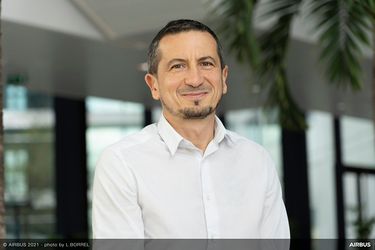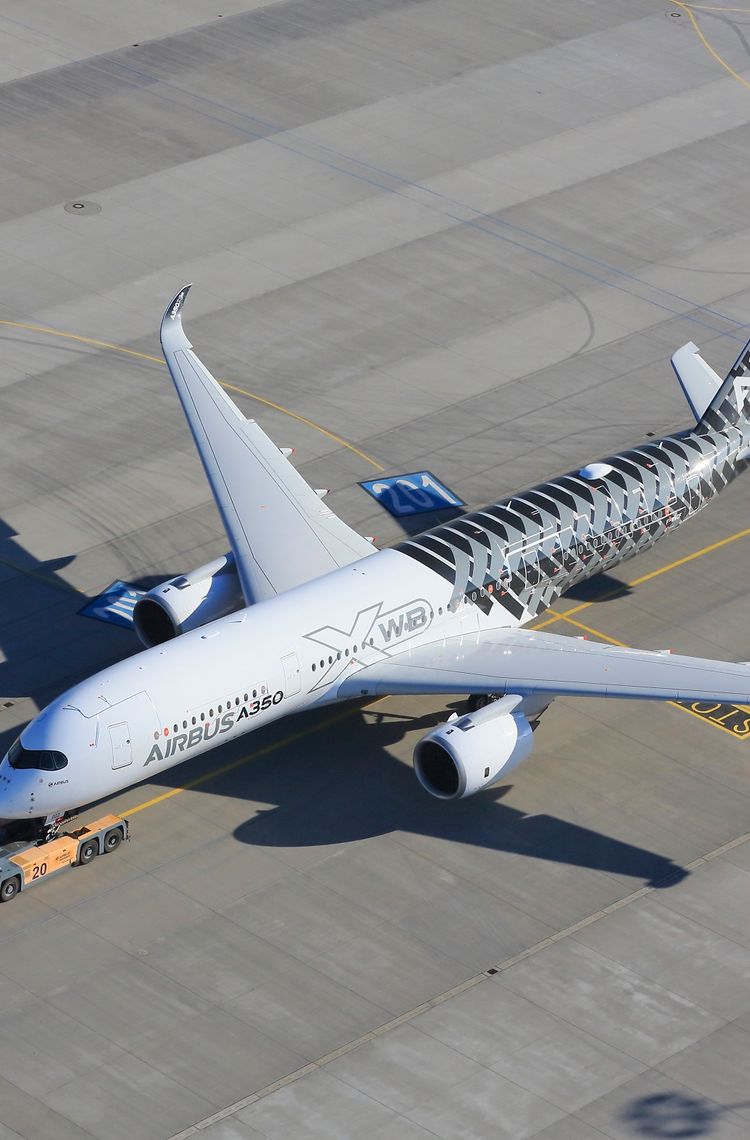Decarbonising flight will require a range of solutions, including new fuel types and innovative technologies. Some will bring radical changes, while others offer more incremental gains. Karim Mokaddem, Airbus Head of Electrification, describes the different ways hybrid-electric power can benefit fixed-wing aircraft and helicopter solutions.
The electrification of flight has accelerated rapidly in recent years, from the development of electric vertical take-off and landing vehicles (eVTOLs) for urban air travel to smaller fixed-wing aircraft that carry up to nine passengers. However, the technology’s leap to commercial aircraft has been beset by slower-than-expected progress.
As a veteran of the automotive industry, Karim Mokaddem has seen first-hand the rapid progress made in battery-electric power in recent years. The aviation industry may face different challenges, but he believes the time is right for hybrid-electric innovation to make its mark on commercial aircraft operations and beyond.

5 questions with Karim Mokaddem, Airbus Head of Electrification
Q. Advances in battery technology have enabled the rapid proliferation of electric vehicles in recent years. Why hasn’t the same happened for electric aircraft?
Today, lithium-ion batteries simply don’t offer the same energy density as other forms of propulsion. In other words, the poor battery-specific energy compared to kerosene is a real showstopper. To give an electric aircraft more power, we need more batteries, which means more weight. In aviation, added weight is a significant obstacle. For cars, this is less of an issue: they’re smaller, lighter and don’t fly, so they need much less power. And ultimately, cars recover energy when braking. As yet, we haven’t been able to achieve the same balance between weight, energy and power for a commercial aircraft like an A320.
That being said, batteries have proven to be highly efficient for smaller electric aircraft, particularly the next generation of urban air mobility vehicles, as demonstrated by Vahana and CityAirbus.
Q. So, does electrification still have a place in commercial aircraft? If yes, how?
Absolutely! Until we solve the energy-density challenge for propulsion, batteries can play more of a supporting role to reduce an aircraft’s CO₂ footprint. We call this micro-hybridisation. So instead of relying on thermal engines to completely power the aircraft, we could use small batteries to provide electrical power for some on-board systems, as well as to help relieve the engine in certain operations.
Until we solve the energy-density challenge for propulsion, batteries can play more of a supporting role to reduce an aircraft’s CO2 footprint. We call this micro-hybridisation.
- Karim Mokaddem, Airbus Head of Electrification
Q. In which applications could micro-hybridisation have the most impact?
In the near term, it’s most suited to powering non-propulsive functions, such as air conditioning and cabin pressurisation, communications, flight controls and landing gear.
We could also use micro-hybridisation for certain engine functions on the ground and even in the air. Right now, commercial aircraft rely on an auxiliary power unit – a small gas turbine – to deliver power on the ground and to help start the main engines. Batteries could relieve this in a more sustainable, fuel-efficient way.
And while current battery technology doesn’t have the right energy or power-to-weight ratio for intensive operations like take-off and cruise, we could use electric power to assist the thermal engines during taxi and descent.
Q. What would be the main advantages of electrifying an aircraft’s functions?
Any process that draws energy from a battery instead of a thermal engine will reduce emissions by eliminating the need to burn fossil fuels. We estimate that micro-hybridisation could reduce an aircraft’s environmental footprint by between 1% and 6%. For helicopters, it could be as much as 10%. Electrical systems are also typically easier to maintain than mechanical ones, which is another advantage. Lastly, micro-hybridisation could be an enabler for autonomous flight systems and connectivity technology, which will become increasingly important in the future.
Q. Does micro-hybridisation have applications beyond commercial aircraft?
Yes, it could be hugely beneficial for helicopters. Because they’re smaller and lighter than fixed-wing aircraft, there’s more immediate potential for battery-electric power to make a greater impact. Operating one engine on a twin-engine helicopter on electricity, for example, could reduce fuel consumption by between 15% and 25%. Military aircraft, too, could potentially implement micro-hybridisation techniques.
Ultimately, at Airbus, we aim to apply micro-hybridisation in a modular way across all our relevant products. Battery technology is evolving quickly, so it’s vital to get the architecture right today. In doing so, we can easily adapt as battery technology matures.
